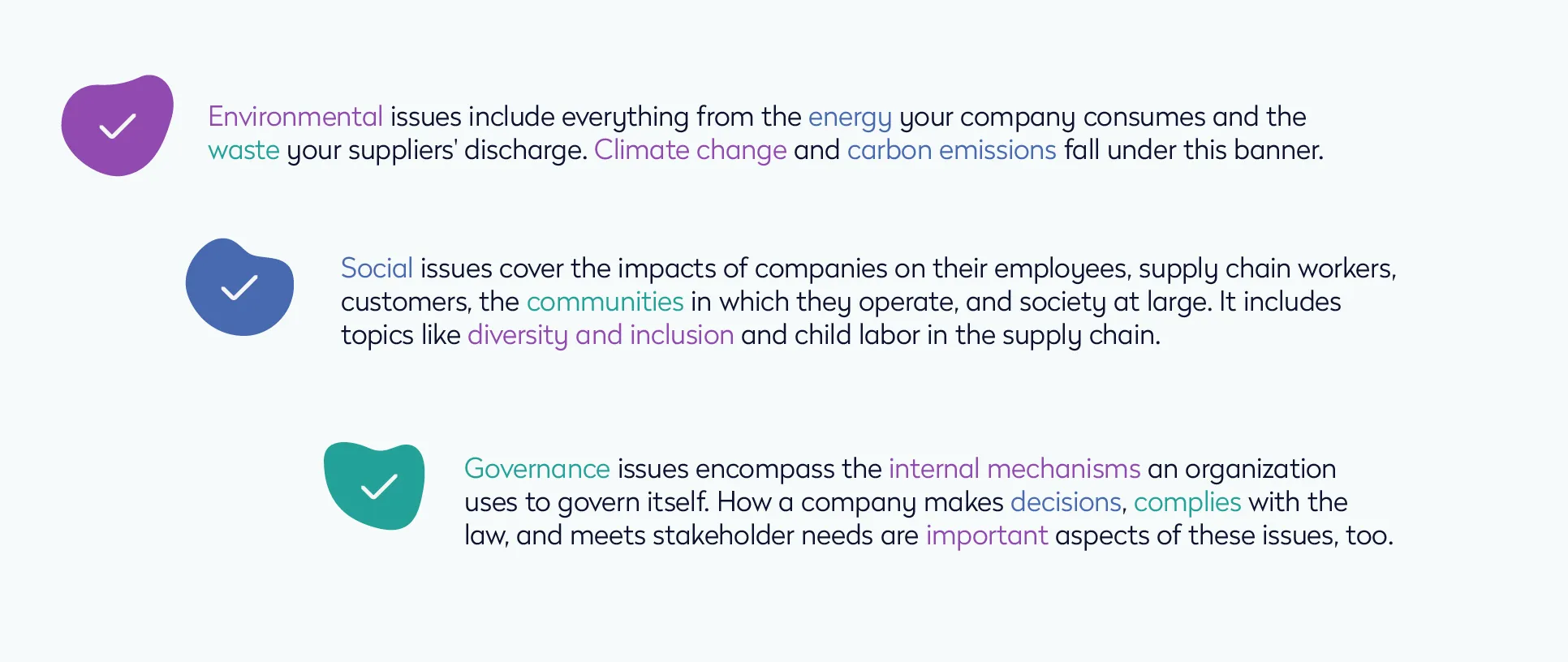
Every business is deeply intertwined with environmental, social, and governance (ESG) concerns. ESG notably helps reduce carbon emissions – though it is much bigger than that.

Your ESG initiatives and performance greatly impact your business. Understand common challenges when meeting carbon dioxide (CO2) and ESG targets. Additionally, learn how flexible working patterns and better asset management software can help you cost-effectively meet ESG standards and how doing so also cuts employee recruitment and retention costs.
Overcoming common challenges of cutting carbon emissions
When carbon dioxide enters the atmosphere, the natural greenhouse effect becomes supercharged, ultimately causing the global temperature to rise. With buildings accounting for 39% of global carbon emissions, there is an opportunity for more companies to slash their carbon footprints.
While companies understand the global priority to reduce their carbon footprints, they face common challenges. One of the biggest challenges is the high upfront cost of implementing sustainable practices.
Specifically, businesses are concerned with long-term assets such as workplaces. Most companies haven’t constructed budgets to meet net-zero targets, as they were primarily focused on their standard lease renewal cycle.
Properly addressing climate change takes dedicated planning, coordination, and effort. Space planning and asset management technology help businesses save time managing these tasks.
How, exactly? We asked Eptura customers – the firsthand experts – how technology allows them to align their workplaces, people, and assets to CO2 targets:
Heating, ventilation, air conditioning (HVAC), and lighting costs
With hybrid work comes less occupancy on certain days.
Eptura’s single-platform solution provides insight into the areas of the building not utilized, allowing you to cut down on HVAC and lighting in those corresponding areas. As well you can leverage data and reporting to consolidate space according to the expected attendance.
Cleaning
The scheduling of your professional cleaning crew can make a difference. For example, companies can save on maintenance costs by having their workplaces cleaned during the early part of the day or evening. This also avoids noise disruptions.
Eptura’s Asset technology can specify and manage task allocations for cleaners based on actual usage. Doing so reduces cleaning hours and thus costs.
Water
Space management helps facility managers know where they can reduce water line pressure without causing an interruption. Additionally, technology can show companies where they can update tea and kitchen facilities to large, shared spaces to reduce distribution points across the building while still encouraging staff collaboration.
Equipment and maintenance
Data-driven usage management can balance wear and tear on large capital equipment; including HVAC, elevators, etc. This preventive maintenance helps you avoid large and expensive breakdowns.
Fit-out scales and costs
Through targeted analysis of space usage, you can reduce your tenancies to address actual usage needs – such as shifting to collaborative spaces as a replacement to single-person focus spaces.
Software as a service (SaaS)
Implementing SaaS packages reduces the need for on-premises hardware, as well as its associated energy consumption, due to the software being delivered via the cloud.
Cloud-based solutions
When you migrate internal IT hardware to cloud-based solutions, you reduce the need to host internal servers, which can be very energy intensive. The migration to the cloud improves a company’s footprint by increasing resource utilization and promoting the use of renewable energy.
How the hybrid workplace changed total energy usage
Businesses that shift to the hybrid work model have the potential to reduce their total energy usage. Why? With fewer people in the office daily – a reduced office footprint – less energy is required in the workplace.
However, transitioning to hybrid work isn’t without its challenges. Comprehensive data – acquired through space planning and asset management technology – helps companies manage this transition effectively.
What is space planning and asset technology?
Eptura’s Workplace technology measures desk usage and occupancy levels. With this, you can identify possible ways to consolidate office space, which ultimately saves energy.
For example, you can avoid rigid desk assignments, team or neighborhood designations, and large, underutilized areas. Focus on dynamic space planning and allocation. Consolidate staff activities into a single floor or designated area on days with lower office attendance.

Companies have implemented desk bookings and managed floor openings, similar to how hotels operate. As a result, they have significantly reduced their Commercial Real Estate Operating Expense Ratio (CRE OXR). ESG encourages cost reduction in operating and labor. It also helps you identify unused real estate that can be released.
Data helps improve ESG standards in a cost-effective way
Accurate data collection is critical for business leaders to improve ESG standards cost-effectively and successfully. By collecting and analyzing data across all aspects of your workplace – including energy consumption, water consumption, consumables, repairs, and maintenance – you can identify areas with room for improvement.
Data helps companies:
- Measure desk usage and occupancy levels to assess potential energy savings
- Use sensors and IOT devices to track and forecast usage and maintenance requirements across the building – from CO2 usage to work point level energy consumption
- Proactively analyze equipment for wear and tear to extend its lifetime and ensure energy efficiency
- Track carbon emissions to know where to focus efforts to reduce the impact
- Use live analysis and forecasting to turn targeted assets and equipment
- Evaluate the selection of sustainable and long-life equipment
While upfront costs can be intimidating, data shows business leaders how they can save more money long-term. For instance, you may determine it is better to spend more money on equipment that will last longer based on your overall cost of the unit to maintenance.
ESG affects businesses’ ability to compete in the marketplace, with investors and customers looking for relevant policies and accreditations. Data can lead you to make targeted investments in sustainable practices that will impact your environmental performance the most.

And ultimately, these informed decisions build trust with your investors by proving your commitment to ESG. In 2022, 89% of investors considered ESG issues in some form as part of their investment approach. This has only continued to increase in 2023.
Environmental concerns impact how businesses recruit talent
Environmental concerns increasingly impact how companies recruit talent and present themselves to desirable job candidates. While carbon management is essential to ESG, it is much more than that, also impacting employee experience, retention, and occupancy.
Talented candidates want to work for organizations that take ESG seriously. Top employers, determined by employee satisfaction and attractiveness to talent, have significantly higher ESG scores than their peers. Satisfied employees tend to be more productive, work harder, and stay with their employers longer.

By 2029, millennials and Gen Z – who place great importance on addressing climate change and promoting sustainable practices – will make up 72% of the world’s workforce compared to 52% in 2019. Thus, companies that commit to meeting ESG targets will save on recruitment costs and retention rates.
Your business is as only as good as your employees. Promoting your sustainable practices and dedication to environmental responsibility gives you a competitive advantage with candidates, strengthening your talent pipeline. It will also attract like-minded individuals who share your ESG values. And employer and employee relationships are at their best when values are aligned.
The bottom line is that modern talent is highly attuned to ESG issues, both personally and professionally. Therefore, supporting ESG initiatives will reduce the costs associated with recruitment and retention.
Summary
On top of helping make a positive environmental impact, adopting ESG strategies helps companies grow, cut costs, and boost business resilience. How? ESG influences more than occupancy and energy savings; it also improves employee experience and retention.
Flexible working patterns and the right software allow business leaders to meet ESG targets without resorting to high upfront costs. With space planning and asset management technology, cut your CO2 emissions, appeal to investors, and save on recruitment costs simultaneously.








